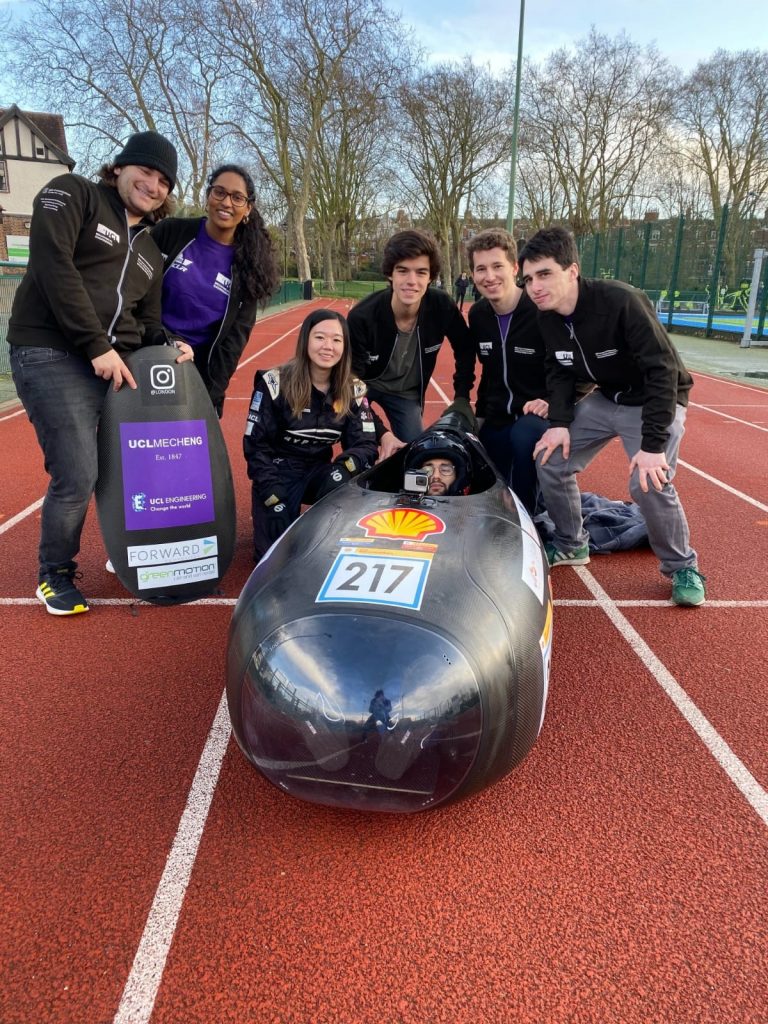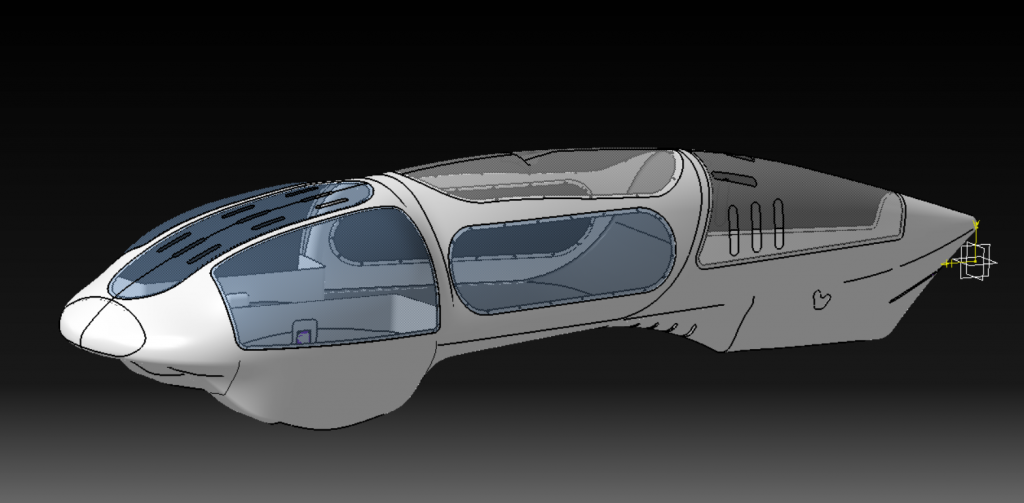
Team Members
- Luke Brennan
- Antonio Gonzalez
- Ignacio Lopez Perea
- Jessica Li
- Laxshana Chandrakanthan
- Mohammed Bangi
- Kevin Syc
Supervisor
The Project
Team Hydrone aims to design and build a highly efficient hydrogen fuel cell powered vehicle, to compete in the Shell Eco Marathon competition.
The goals of the project for the 2019/20 team were:
• Design and manufacture a new carbon-fibre monocoque chassis to improve the efficiency and handling of the vehicle
• Procure a new fuel cell and design a new powertrain system, with the aim of reducing parasitic energy losses, and allowing the vehicle to complete the 16km course in the permitted time.
• Design new steering and braking systems, that are compliant with the latest Shell Eco Marathon rules and present structural and dynamic improvements on previous designs.
• Develop an efficient, safe, and reliable racing strategy by simulating the vehicle running on the competition track, and devising a speed profile that minimises hydrogen consumption.
The Design
• The existing Hydrone vehicle was fitted with a new motor controller, and tested under battery power, reaching a maximum speed of 11 m/s (thus validating powertrain modelling).
• A new monocoque has been developed that offers a 7.3 kg mass reduction, 14% reduction in drag coefficient, and a 50% increase in toppling velocity.
• Detailed models of the vehicle’s powertrain have been developed, showing a power requirement of around 100 W for a 7 m/s speed; and from this modelling, a fully integrated powertrain system has been constructed, incorporating a novel safety system.
• A new, lightweight fuel cell has been ordered, and is capable of powering the vehicle around the course with just 55% of the allowed fuel capacity, hence comfortably meeting the fuel constraint of the challenge.
• A new and intuitive Ackermann steering system has been designed, incorporating self-aligning torque to reduce the driver’s physical exertion.

 Close
Close




